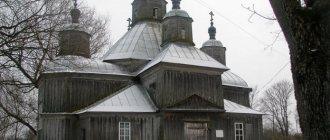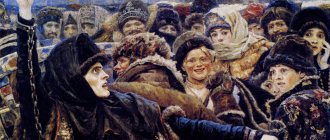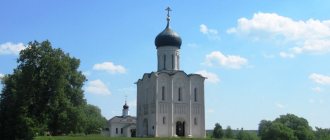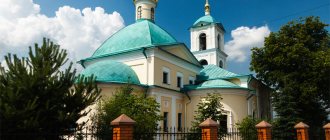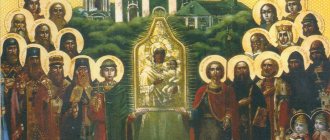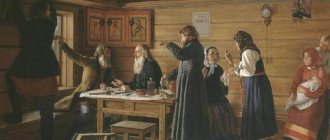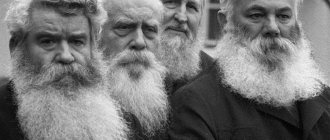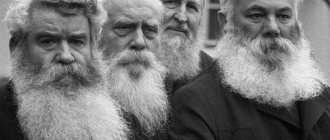What can secular people learn from hermits who have lived in isolation for generations?
Old Believers adhere to strict canons, but life dictates its own rules
At the height of the coronavirus pandemic, residents of megacities went crazy in self-isolation. And the Old Believers have lived in it for decades, not accepting telephones or television (even reading a newspaper is a sin). In the Urals there are entire villages where young people live according to strict rules and where 90-year-old elders - true Old Believers - are still alive. URA.RU correspondents went to the remote places of the Sverdlovsk region to understand whether there is happiness without the benefits of civilization?
«Old Believers
- they are unsociable, they don’t welcome guests,” “this is a sect,” “they pray all night - from evening until morning,” “even if they invite you into the house, there are separate dishes for strangers” - such tales about the Old Believers circulate among the people. When communicating with them, it often turns out that much of this is myths. So, two years ago, at the opening of the Old Believer church in Staroutkinsk, we journalists were allowed to attend the service, and Metropolitan of the Russian Orthodox Old Believer Church Korniliy gave an interview to URA.RU. But, as an Old Believer friend explained, in the Urals there are still Old Believers who live closed, and all the “horror stories” about them are true.
It all depends on the direction in the Old Believers. “There are Pomeranians - they are even reluctant to contact us, but they definitely won’t talk to you,” says an Old Believer acquaintance. The most democratic are the White Church members (they are led by Metropolitan Cornelius). And there are chapels, they are also “non-priests” (they do not have priests - the services are conducted by the members of the community themselves). There are several villages with such communities in the west of the Sverdlovsk region - in the Shalinsky district.
Background to the schism of the Russian Church
Christianity , brought to Russia from Byzantium, was based on Byzantine traditions. All Russian texts of books, including the Holy Scriptures, were translations.
Traditional rituals and elements of worship were not taken from books, but were transmitted orally between clergy. In this connection, at the end of the 16th century, a dispute arose about how many fingers should be baptized. documentary written sources strictly defining the tradition of the “ sign of the cross ”.
two fingers were adopted (they were baptized with two fingers). While in Greece in the 13th century they adopted triplicate. There were other differences that, as they accumulated, greatly separated the Moscow Church and the Greek Church.
Since Greece was considered a kind of successor and continuer of Byzantine traditions, the Russian Church carefully looked at new trends in Greek culture, gradually introducing them into its own country.
For example, the Russian clergy, long before the 17th century, began to wear clothes similar to the Greek clergy, and then they introduced the tradition of wearing long hair, etc.
Church schism
By the mid-17th century, the Russian Church came to understand the need for church reform to minimize the differences between the Greek and Russian traditions.
Tsar Alexei Mikhailovich appointed Metropolitan Nikon of Novgorod in 1652, after the death of the previous head of the church.
Nikon, who had already served in the church for a long time, had his own view of the texts and rituals. The Patriarch believed that it was necessary to carry out church rites as accurately as possible , since this is of key importance. The Church of Constantinople was considered a model in this matter; having taken the highest position, Nikon decided to implement his ideas and carry out church reform.
It is noteworthy that Patriarch Paisios of Constantinople, with whom Nikon consulted, noted that rituals are an insignificant part of religion; they can be interpreted and performed in different ways. Nikon took the answer in his own way. Therefore, in the 1650s, the reform of Russian church traditions began with the support of Tsar Alexei Mikhailovich Romanov.
The conflict is over...
Another “rough” question is with , who for some time “attacked” the community, trying to keep it out of its walls, to prohibit the building of a temple. The Old Believers did not give up. They say that nowadays there has been a dialogue between the community of believers and the center; the institution no longer has any claims to the nearby temple.
Some time ago there was a conflict between the Old Believers community, but these days it has been settled - the educational center operates according to its own schedule, and the Old Believers are building the temple at their own pace
The priest talks about this situation like this:
“We appreciate the fact that the president showed interest in our community and listened to us, although he could have ordered a bulldozer to crush everything.” We proposed that Sirius jointly develop the culture and preserve the history of Imeretinsk. All arrests from our church have been lifted, we go to prayer fearlessly, no one forbids us from serving God, although this entire conflict, starting with the resettlement and ending with claims from the educational center, of course, will remain an unpleasant stain on the history of relations between us and the state, but We overcame it and are moving on.
The shepherd is sincerely glad that the southern Old Believer, like his northern neighbor, today can not hide and freely profess his faith and think about the prospects. And this philosophy has now been formed in all parishes in the south of Russia.
.About how to interact with the authorities, and the gratitude of the Sochi Old Believers to President Vladimir Putin, who showed tolerance and followed the path of preserving history..
Changes in Russian traditions
Nikon began his work with a careful study of the documents that approved the emergence of the Moscow Patriarchate, and a comparison of Russian church texts with similar Greek ones (special experts who knew Greek were invited to translate).
As a result, instructions were created for all churches, which indicated all the changes made and now ordered them to act according to the new rules.
As a result of church reform, the texts of the Holy Scriptures and liturgical books were edited. The changes cannot be called significant. In some places they removed conjunctions in sentences, replaced the spelling of words (For example, Jesus began to be spelled Jesus), replaced the phrase “no end” with the future tense for the Kingdom of God, and so on.
They introduced a new tradition of the sign of the cross - with three fingers . Small bows to the ground were cancelled , now you had to bow from the waist.
religious procession also changed - now they walked against the sun.
A three-time pronunciation of “ Hallelujah ” during worship has been introduced (previously it was said twice).
The prosphora - their number and seal - were changed
After the reform
All those who did not follow the new instructions and continued to make the sign of the cross with two fingers (this point became key in the dispute) were anathematized and called schismatics and heretics at the Council convened by Nikon in 1656. The Council recognized the need to correct liturgical books and in 1666 anathema the old books and rituals.
An oath is an Old Believer’s obligation to renounce the Old Believers in 1828, Novgorod province. “I, the undersigned, give this commitment to the parish priest John Pit-Gorsky in that from now on I am leaving all the errors of the Old Believer sect, in which I have been until now. And I vow not to break it. Keep all the dogmas of the true Christian faith and raise your children in it. If only God bless me. January 28, 1828. The owner Fyodor Dorofeev had a hand in this obligation of the 2nd settled company.” Taken from GANO
However, a whole movement of clergy dissatisfied with the new rules appeared: Archpriest Avvakum Petrov, Loggin Muromsky and a number of others. Entire monasteries abandoned new traditions: the Solovetsky Monastery in its entirety in 1667 refused to recognize the accepted rules, there were many other monasteries and monks. Such refusals were harshly suppressed by the army; monks were forced under torture to renounce the Old Belief, they were executed or sent to prison or exile.
New icons were painted according to new rules - saints were depicted with the three-fingered sign, which outraged adherents of the pre-reform tradition; they did not recognize these saints.
Those who denied the new church tradition officially began to be persecuted. The schismatics called themselves “ Old Orthodox Christians ”, and then “the true Orthodox Church” or “ Old Believers ”. Old Believers take root among them .
Competition between two faiths
Before the revolution, Roshcha was not a purely Old Believer village - “church” people (adherents of traditional Orthodoxy) also lived here. The Old Believers did not like them, considering them “traitors to the faith,” but they coexisted peacefully, and before the revolution in the village there was even a church of the same faith, where both of them prayed.
The Kerzhaks also had a chapel and, they say, its decoration was richer, which is not surprising: the Old Believers are very hardworking, many were wealthy peasants - during collectivization they were dispossessed, some were exiled.
The communists demolished both the church and the chapel in 1937. Those who remained faithful to the old faith went “underground”, gathering for services so that no one could see.
Old Believer businessman Nikolai Burylov helped build an Orthodox church
Nowadays, the village also lives on two faiths. According to the lists of villages of 1860, there were about 3.5 thousand Old Believers in Roshcha and only a thousand were church believers. Today the ratio is the same: most of the village residents are associated with the Old Believers. “We have 15-20 people at our service, and on Easter and other major holidays up to 50 people gather,” says the museum’s creator. “And in the church it’s half as much.”
Nikolai Vasilyevich Burylov, the head of Roshcha LLC, helped build the Orthodox Church, although he himself is an Old Believer. According to him, the severity in which Old Believers are brought up in families is the key to order in the village (during the entire time we spent in the village, we did not notice a single drunk). “There really are fewer vices in the Old Believer part of the population,” admits the Old Believer businessman. - What about the dishes? The fact that the Kerzhaks ate only from their own dishes is justified from a hygiene point of view!”
The Roshcha enterprise, which he runs, is a city-forming enterprise in the village; it provides work for local residents, thanks to which the village not only does not die, but is even slowly growing. Unlike many villages in the Sverdlovsk region with abandoned, crumbling houses and rickety fences, the Old Believer villages look well-groomed, like Bashkir villages.
Currents and types of Old Believers
Considering the regionality and distance from each other of those dissatisfied with the new rules of Nikon’s reform, several decades later different movements of Old Believers appeared. This is due to the fact that the clergy, who inspired the schismatics and gathered a large number of followers, not only sought to defend the principles of the Old Belief, but also to introduce their own ideas and beliefs.
Representatives of different agreements of the Old Believers did not recognize each other , considering their own faith and traditions to be true.
Popov's consent
The most popular movement of the Old Believers was “priesthood.” The Old Believers of this agreement existed and conducted their activities similarly to the Orthodox Church. They had their own priests, who were considered necessary for conducting rituals and sacraments. The stronghold of the priests-Old Believers was in the Nizhny Novgorod region, later it spread throughout Russia - to the Don region, Chernigov, and in the 19th century the main community was in Moscow.
The Old Believers accepted clergy from the Orthodox Church, since they themselves could not ordain clergy, and moreover, they believed that continuity was preserved, despite the reforms.
In 1846, the Belokrinitsky hierarchy arose, which to this day remains the leading movement in the Old Believers. Some of the schismatics went over to the priestless sect, not wanting to obey Metropolitan Ambrose of Bosnia, who converted from Orthodoxy to the Old Believers.
Edinoverie
Edinoverie, the so-called Orthodox Old Believers. In 1800, they came under the control of the Russian Orthodox Church, while preserving all the traditions of the Old Believers unchanged, since the Orthodox Metropolitan declared “points of unity of faith.”
Today, communities of the same faith continue to exist.
Bespopovsky sects
As the name suggests, this movement of the Old Believers carried out its activities without clergy. After the death of the priest, there was no one to replace him, and the Old Believers did not trust those who followed the new principles and traditions in Orthodoxy. Therefore, left without a priest, the Old Believers were forced to appoint a layman to this position. It was necessary to abandon elements that could only be conducted by the clergy, but in general, services continued to be held.
The widespread residence of bespopovsky sects refers to the northern regions of Russia (the most widespread are the Danilov Pomeranian and Fedoseyevskoe concord), Karelia, the Vyatka province, and the Nizhny Novgorod region, but as a phenomenon they were found everywhere.
Apart from the refusal to abandon the clergy, this movement has taken many forms. Some consenters completely abandoned the icons, considering them desecrated, and prayed looking strictly east, for which they made a hole in the wall of the house (from which they received the name “holes”). Others preferred to run and hide from the authorities, not to pay taxes and other duties (these were called runners or wanderers).
List of schismatics of the Danilovsky priestless sect of 1904, Vyatka province. Old Believers of Oryol district. Source GAKO
Green island among concrete
The same torch against the backdrop of the Old Believer cemetery that lit up on the opening day of the Olympic Games.
An important point in the Imereti Lowland is the Sochi Old Believer cemetery. And not only for believers, but also for “ordinary” tourists who come here to see this miraculously preserved green island among concrete and inevitably deteriorating Olympic venues. By and large, there is nothing for tourists to do in Imeretinka today - kilometers of roads with no way to park legally, many new-build hotels, and an educational institution that is gigantic in area and infrastructure. Therefore, some people come here not at all to bask on the local beach - it is not much different from any others. People are going... to the cemetery!
This is what the Olympic venues look like from the cemetery
“Yes, this place attracts not only local or Russian Old Believers, but also delegations from Romania and Australia,” says Father Artemy. — People come and the first thing they ask is where is the Old Believer cemetery in the center of the Olympics?
How do Old Believers differ from Orthodox Christians?
Each Old Believer movement may have its own exceptional characteristics acquired over many years, but they are all united by a special church worldview based on “Old Orthodox” traditions.
They cross themselves with two fingers.
A four-pointed cross without a Crucifix, or an eight-pointed cross with a Crucifix.
Baptism is carried out with triple immersion.
All letter and text changes in the theological books adopted by Nikon during the reform are absent; prayers and texts are read in the old way.
Singing in church should only be unison.
The procession of the cross is not carried out against the sun, as in Orthodoxy, but in the direction of the sun.
In search of true Old Believers
True, as we were told in Roshcha, there are almost no true Old Believers, those who really live according to old customs and strict rules, in the village.
Everyone remembers the legendary Baba Dunya, who lived without a passport - only on alms, and did not even allow her grandchildren to call herself grandmother (although she loved them), since her son did not marry his wife.
According to Meltsina, Baba Dunya, coming from Kedrovka to Roshcha, stayed with her, and after the conversation she always asked for forgiveness: “What if you didn’t like what I said, you will condemn me, and this is also a sin - it turns out that I led you to sin !
The ancient Psalter is at least 150 years old.
Today there is only one elderly Old Believer left in the village - 90-year-old woman Dusya, but she does not communicate with strangers - only with her family, and goes to services. “She threw away the TV and will never be photographed,” says Zinaida Meltsina. “She even punished her daughter: ‘either take all my photographs, or I will burn them’: the saints’ faces can be on earth, but our faces have no business remaining in the world.”
We managed to talk with the elder of the Old Believers community in Roshcha, Natalya Sharavina - she categorically forbade herself to be filmed, but agreed to talk on the street. She told how Baba Dunya taught her to conduct services - to read the Psalter in Old Church Slavonic.
“We already have 11 people reading Old Church Slavonic,” Natalya says proudly. But she admits that she is far from real Old Believers: “I have a television dish hanging on my house - when I die, they won’t even hold a funeral service for me.”
A true Old Believer, Baba Zina from the village of Platonovo. After talking with reporters, she had to atone for her sin
To find elderly, true Old Believers, we had to go to neighboring villages. In Platonovo, we were helped by the head of the administration, Igor Shchukin (himself also an Old Believer), who took us to his 83-year-old relative, Baba Zina. She talked to us a little, standing in the front garden and leaning on a stick - she said that her ancestors came to the Urals after the Nikon reform. “All my mother’s generations are Old Believers,” says my grandmother. - And we weren’t in the temple (ordinary church - editor’s note). And now the generation is changing. Was there such a thing in those years that people washed in the bathhouse and drank beer?”
Baba Zina admitted that after our communication with her, she will have to atone for her sin, but where can she go? “Our grandmother is already famous - the local newspaper published a photograph of her washing clothes in an ice hole in winter,” the head of the administration laughs. According to him, there are many Old Believers in Platonovo, but most of them are in Simanyati: the entire village there is Old Believers. We call the elder Elena Sharavina. “Come,” she says. “I don’t know if any of the old people will want to communicate, but I’ll tell you what I know.”
